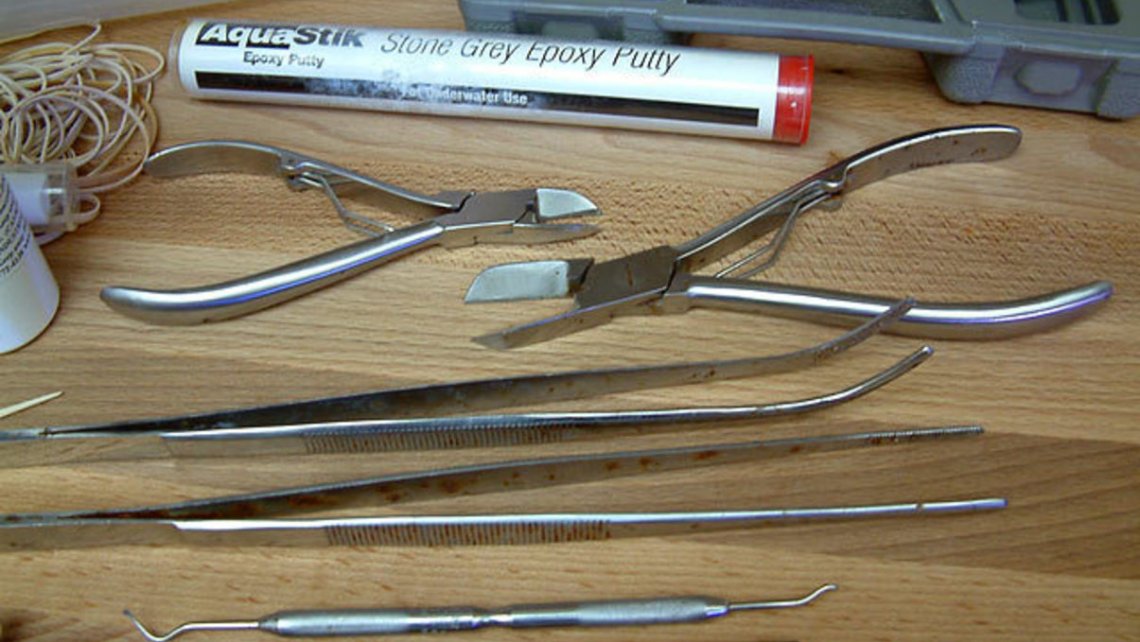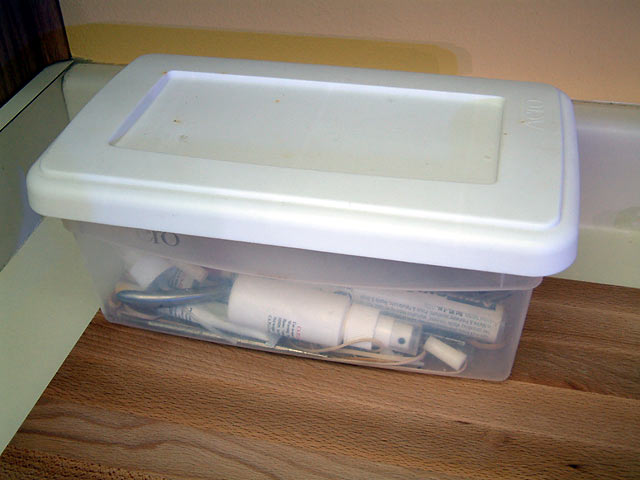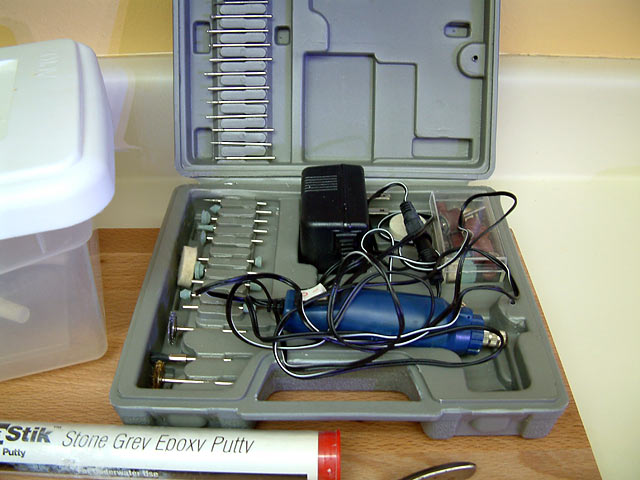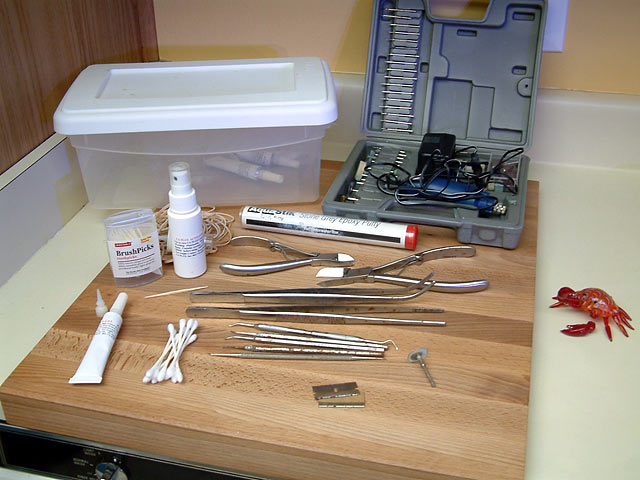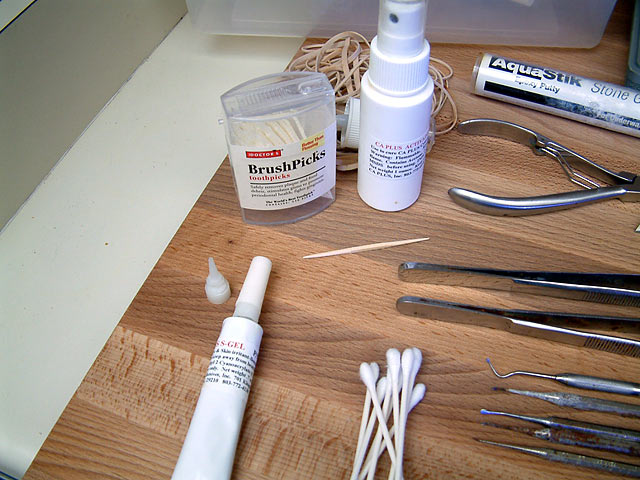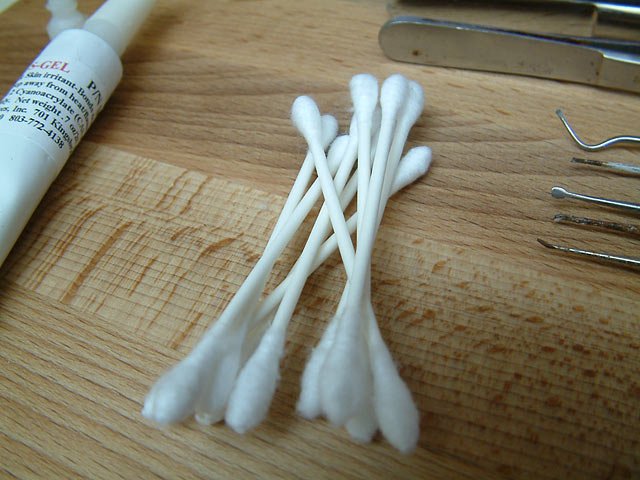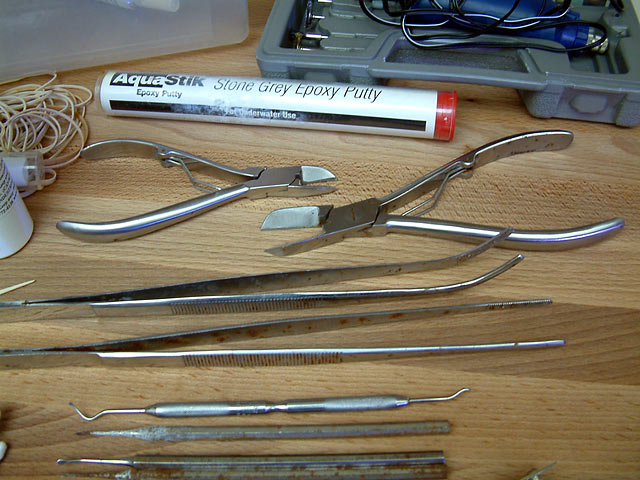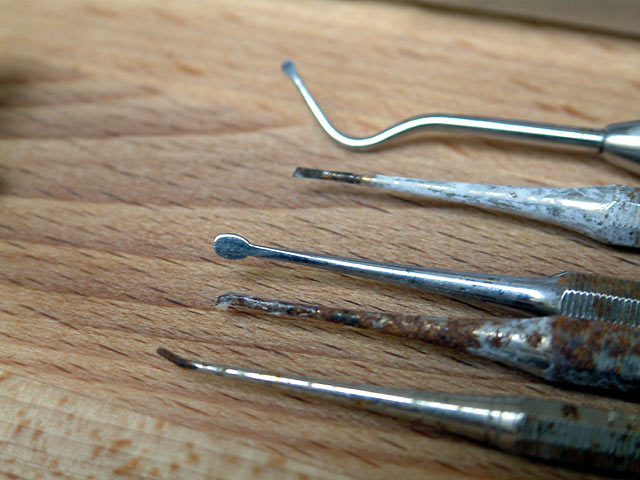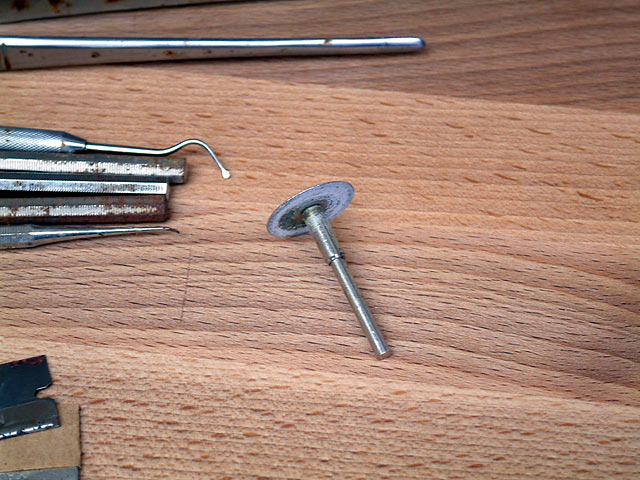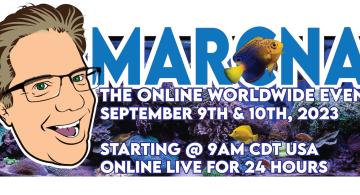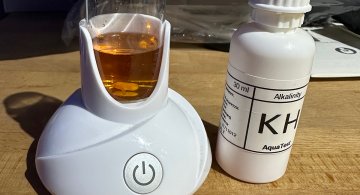Fragging Tools
Fragging corals is a big part of the hobby. Being able to acquire frags from others has benefits. Corals are shared rather than the constant harvesting of wild colonies in the ocean, and they are already accustomed to dwelling in a closed ecosystem. The giver prunes the colonies in their reef, allowing for better flow. They are able to 'bank' a coral with you in case theirs perishes for whatever reason. The receiver enjoys watching the little piece grow into something beautiful over time, and then will one day be a giver as well.
Over the years, commercial sales have shifted from colony-sized corals to frag-size. Getting bigger colonies is nearly unheard of. Just about anything can be fragged, which is to cut a fragment off the bigger colony. I have a general rule: I won't frag a frag. I'm more of a hoarder, preferring to grow them into big colonies but from time to time I have to cave in and snip a few piece here and there.
Here's my old fragging kit. I keep it in a simple container from the Dollar Store.
Harbor Freight Rotary Tool kit. It was only $8, and rather worthless. I also own a Dremel, but sometimes wished I'd purchases a cordless version even though it's quite a bit more ($79-ish).
Here it is, all laid out.
Everything is used and abused, so just ignore rust stains and/or damage in these closeups.
I used Cyano Acrylate, from Ca-Plus.com It is super glue gel, but in a larger tube (20g instead of .5g tubes). I also use some accelerator from them, to speed up set time. We used to buy 50 of each from that site for around $220 a couple of times a year in group buys. There are other products on the market that work quite well, such as the Cg Coral Glue from Ecotech.
When gluing an acro frag or a zoanthid polyp, dry off a spot on your live rock rubble (or boulder), then apply the accelerator either with an applicator, or with the spray nozzle that comes with it. Either seems to work. Then blot off the coral's base, and apply some glue. Press it into place, and within 5 seconds, it is secure. I dip it in bowl of tank water to remove any toxins before it goes in my tank.
Alternately, you might want to use two-part epoxy putty, like the one pictured by Two Little Fishies. You mix it in your hand until it is uniform in color, press it to the LR and form it around the base of your frag. This stuff will make your skimmer overflow, so turn it off for a while, or just use a little bit each day instead of one monster session of epoxying. Another two part epoxy I use is by DD, and here's the product review: http://melevsreef.com/articles/d-d-aquascape-putty
Here are the tools I use to cut corals, or to pry them off the LR. These work with all kinds of corals, including mushrooms. They came from Premium Aquatics.
The dental tools came from my dentist. I just asked for some old stuff they no longer use but still have in a drawer. I prefer stuff like the middle one you see. I've found similar at Harbor Freight.
The cutting wheel I use on the Dremel. I got this one from Ebay, as we did a group buy and ordered 40 wheels and the shank that holds it. They are pretty cheap. The one drawback is that they don't cut deeply because once you've hit the central shaft, you no longer can penetrate the coral. Radius matters. 
The tile cutting saw blade made for RotoZip would work much better depth-wise, because the blade was 2.5 or 3" in diameter. But with a larger blade, you end up having to work out in the open. You lose the precision of being able to cut in a nitch area.
Anthony Calfo demonstrated using a $50 fisher-price tile cutting wet saw at our Next Wave conference. He sliced right through favias and acans and it didn't take long at all.
Pictured also are razor blades, toothpicks and rubberbands. These come in handy for trimming stuff and securing fraglets. Having all this stuff in one spot will make your fragging sessions easier to manage, so gather up all your tools and pieces and keep them in a carrying case. Lastly, I have a small bucket filled with frag plugs, frag disks and small bits of rock rubble to select from.
Something with HTML textformat
